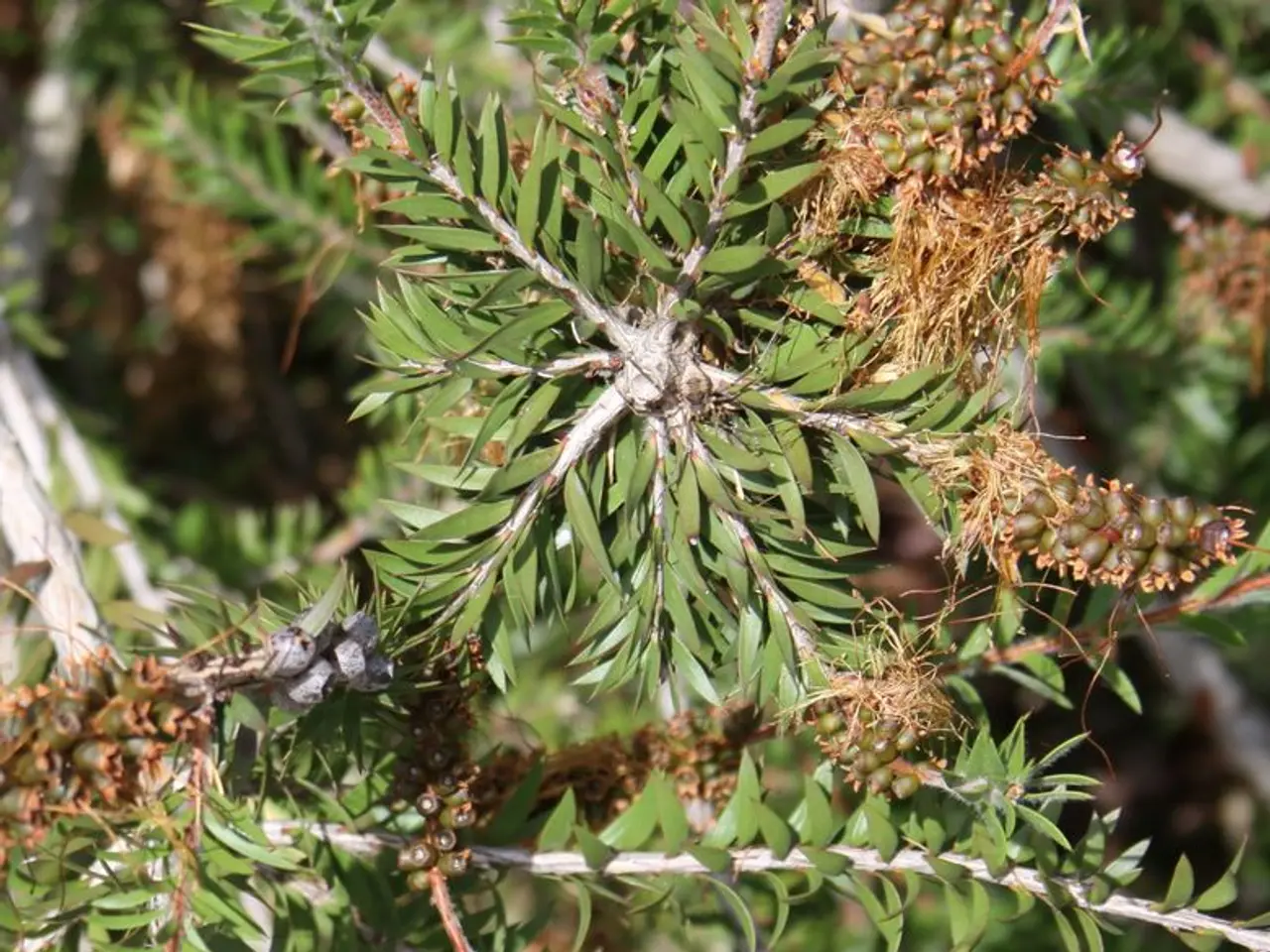Growing a Damson Tree for Abundant Crops of Tasty Fruits: Perfect for Preserves, Jellies, and Gin Making - Ideally Suitable for Harvests
Growing Damsons: A Comprehensive Guide
Damsons, a lesser-known fruit tree, is a delightful addition to any garden. These small, hard fruits ripen in late summer to early fall, offering a deep blue color and a slightly tart flavor that's perfect for making jams, jellies, liqueurs, and more [1].
Choosing the Right Conditions
To grow damsons successfully, plant them in well-drained soil with a pH between 6.0 and 7.0, which is ideal for their growth [1]. The best time to plant damson trees is late winter or early spring, but they can be planted throughout the year if conditions are suitable [3].
Caring for Your Damson Tree
- Sunlight: Damson trees need plenty of sun to thrive and fruit well, so choose a planting spot with full to partial sunlight.
- Watering: Regular watering during the growing season is important, especially in dry spells, ensuring the soil stays moist but not waterlogged.
- Pruning: Prune in August to thin out fruits and branches. Thin the fruits so that there’s roughly one damson every two to three inches on a branch, which helps the remaining fruit swell and ripen better. Also, prune to remove dense growth and improve light penetration inside the tree canopy [5].
- Fruit thinning: Damson trees naturally shed some fruit during early summer ("June drop"), but additional thinning improves fruit size and quality [5].
Propagating Damsons
Growing damsons from stones takes much longer—up to 15 years—compared to grafted trees, which typically bear fruit in 3 to 5 years [3].
Maintaining a Healthy Damson Tree
- Mulching around damson trees with organic matter can help retain moisture in the soil and smother weeds.
- A soil moisture meter can help determine the water levels in the ground.
- Annually fertilizing damson trees in late winter with a balanced product is beneficial.
- Damsons in pots require feeding with a liquid feed high in potassium every few weeks during spring and summer.
- Pruning damson trees should be avoided in winter to prevent diseases.
- Mature damson trees can be pruned in late spring through early fall, while younger trees can be pruned in spring to shape them.
Growing Quince Trees
Quince trees, related to damsons but with a different taste profile, are low-maintenance and cold-hardy to -15°, making them great options for many backyards. A guide on how to grow quince trees is available for expert tips on planting and maintaining these distinctive trees.
Safety Considerations
It's important to note that the stones of damsons contain cyanogenic glycosides that can be toxic to dogs, especially if crunched and ingested. Always ensure your furry friends stay safe around your damson tree.
In summary, use well-drained neutral to slightly acidic soil, plant in late winter or early spring, ensure adequate sun and watering, and prune/thin fruit in summer for optimal growth and fruit production [1][3][5]. Damsons are simple to grow and provide many benefits to home gardeners.
Here are two sentences that incorporate the words 'lifestyle', 'home-and-garden', and 'gardening':
- Including a Damson tree in your home-and-garden can enhance your lifestyle, as these fruit trees offer a delightful addition to any garden and their fruits are perfect for making jams, jellies, liqueurs, and more.
- For those who enjoy a hands-on approach to their home-and-garden lifestyle, caring for a Damson tree can provide a fulfilling gardening experience, as it involves proper planting, sunlight, watering, pruning, and fruit thinning for optimal growth and fruit production.




